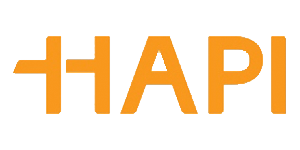Submission Preparation Checklist
As part of the submission process, authors are required to check off their submission's compliance with all of the following items, and submissions may be returned to authors that do not adhere to these guidelines.- The submission is original and is not going through the submission process in another publication. If that is not the case, this must be justified in the section: “Comments for the editor”.
- In case of a previously deposited text in a preprint server, this information must be disclosed in the section: “Comments for the editor”.
- The manuscript is in Microsoft Word, OpenOffice or RTF format.
- Whenever possible, all URLs have been given.
- The text is prepared according to the template in the Submissions page, with special attention to 1.5 spacing; 12-point font; and using of italics instead of underline (except for URLs). In addition, illustrations and tables have been inserted in the text and not annexed in the end of the text.
- The text follows the guidelines for bibliographic references and style as given in the item 3 (“Manuscript submission guidelines”) of the Author Guidelines, at the Information for Authors page.
- Author’s full-name, affiliation, summarized biography and ORCID iD, as well as that of all co-authors, will be properly informed in the system, in the Enter Metadata phase during submission.
Author Guidelines
The journal Revista Brasileira de Estudos Pedagógicos (RBEP) only publishes original works and, in accordance with the principles of Open Science, from January 2023 onwards, all texts previously deposited as preprints are accepted.
It is an open access publication licensed under Creative Commons and, as such, authorizes the sharing, distribution, displaying, and use of its content to substantiate other works, provided that proper credit is given to the source. No fee is charged for the download of individual articles or complete editions. No fees are charged for the submission, processing, or publication of articles.
Authors are solely responsible for the accuracy of information, as well as for concepts and opinions issued on manuscripts, which do not necessarily represent the opinions of this Journal’s editorial board.
RBEP subscribes to good publication practices in compliance with the guidelines of the Committee on Publication Ethics (COPE), going to lengths to discourage misconduct, such as plagiarism or any possible ethical violations.
1 Submission
1.1 The Journal accepts submissions of original manuscripts and, regarding the principles of Open Science, from January 2023 onwards, all texts previously deposited as preprints in the SciELO’s server (preprints.scielo.org), are also accepted.
1.2 In case of preprint, this information must be disclosed in the section: “Comments for the editor”.
1.3 Manuscripts should be submitted only via the Open Jornal Systems (OJS). Authors are required to previously register in order to access the system.
1.4 At the time of the submission, authors’ identification information must be entered directly on the appropriate fields of the OJS platform (metadata), including: full name, institutional affiliation, ORCID, e-mail, last degree and institution by which it was obtained.
2 Types of manuscripts RBEP publishes
2.1 Studies – articles derived from empirical and theoretical research whose aims are clearly defined and whose theoretical and methodological bases substantiate the discussion proposed, considering that:
(a) empirical research should specify research procedures, criteria for selecting subjects and for sampling, methods for collecting, constructing and analyzing data, and the approval of a Board of Ethics, when relevant.
(b) theoretical research should be original and approach issues that are relevant to the field of Education.
2.2 Experience Reports – articles about innovative projects on pedagogical intervention in the field of Education, which show critical and reflective analysis of processes and findings, and are context-sensitive and methodologically grounded.
2.3 Reviews – a critical analysis of books or movies about Education released in the last three years. It should have a title, references, information on the authors/coordinators of the publication, an abstract and the reviewer’s analytical positioning on the contributions the work brings to the field. Furthermore, reviews must include direct or indirect quotations from texts which contributed to their critical reasoning.
3 Manuscript submission guidelines
3.1 Language: manuscripts should be written in Portuguese, Spanish, or English.
3.1.1 Manuscripts in Spanish or English should undergo proper linguistic review.
3.2 Authorship
3.2.1 Each research paper or experience report must have no more than four authors.
3.2.2 Each review must have no more than two authors.
3.2.3 Those who substantially contributed in all of the following stages of the workload will be counted as authors at RBEP:
(a) conception and design of the study, the obtainment or analysis of data, and the interpretation of data;
(b) writing of the manuscript or critical review of its content; and
(c) final approval of the version to be submitted.
3.2.4 Other contributors (interns, research assistants, etc.) will be acknowledge through an additional document, attached to the submission. In this declaration, each individual contribution should be detailed. This information will be published, at the end of the article, under the subhead “Contributions”.
3.2.5 Any authorship identification must be removed from the article, as well as the name of any research groups and institution. It is recommended the use of the format “XXX” in lieu of any reference, including bibliographic ones, as well as protocol numbers and ethical opinions that could disclose authorship of the articles. In the case of preprints, when all information must be already specified in the original, comprise of an exception to this rule.
3.2.6 Authorship must be removed from all files submitted. For example, the option “Properties” and “Information” in Microsoft Word, thus ensuring the manuscript’s anonymity. Such requirement does not apply to preprints.
3.2.7 All authors must be registered at the system at the time of the submission. Under no circumstance may any names be added or withdrawn after the beginning of the evaluation process.
3.2.8 Authors whose submission have been approved must wait a period of 24-months from the article approval to make a new submission. Otherwise, the new submission will be canceled.
3.2.9 Once their work is accepted for publication, author’s copyrights are automatically relinquished to the National Institute for Educational Studies and Research Anísio Teixeira (or Instituto Nacional de Estudos e Pesquisas Educacionais, Inep).
3.2.10 To maintain the quality of this journal, RBEP retains the right to alter manuscripts, with attention to authors’ style and opinions.
3.3 Format: manuscripts should be in Microsoft Word format (.docx), Open Office (.odt) or RTF, with lining space set to 1.5, and ranging between 28,000 and 55,000 characters, including spaces (for all three languages, the length of the article should include title, abstract, keywords and references).
3.3.1 Files should not be larger than 2MB.
3.3.2 Manuscripts should be prepared according to the template available in the journal’s website.
3.3.3 Manuscript’s name should not exceed 85 characters in length.
3.4 Font: Manuscripts should be in Times New Roman, 12-point font for body text, 10-point font for indented citations, and 8-point font for footnotes.
3.5 Illustrations: images should be readable, may be colored, and its resolution should be no less than 300 dpi as well as presented with title and sources that clarify the meaning of the collected data. Tables and graphs (preferably in Excel format) may also be colored and should be prepared in accordance with the guidelines of tabular presentation of the Brazilian Institute of Geography and Statistics (Instituto Brasileiro de Geografia e Estatística, IBGE).
3.6 Title: the title of the article must be specific, descriptive, and concise (up to 200 characters including spaces). It must be written in a way that represents the content of the article, and submitted with accompanying English and Spanish translations.
3.7 Abstracts: all manuscripts must have informative abstracts in Portuguese, English, and Spanish, with up to 1.500 characters including spaces.
3.7.1 Abstracts should provide qualitative and quantitative information and essential data, such as:
(a) Description – an indication of the type of article (whether original article, essay, review, case study, among other options) and the nature of the issue at hand.
(b) Objectives – a statement on what the researcher intended to demonstrate and accomplish with his work.
(c) Justification – a description of the reasons for which the research was carried.
(d) Methodology – a description of the approach, theoretical and methodological reference, and primary techniques employed. It should indicate the source of the data, in which way they were used, the concepts developed and how variables were analyzed.
(e) Results – a brief description of the significant and important findings of the research.
3.8 Keywords: Authors should include between three and five keywords in the article. All keywords should represent the article content and be chosen, if possible, from a controlled vocabulary – such as UNESCO’s or ERIC’s Thesaurus (for keywords in English), or the Thesaurus Brasileiro de Educação (for keywords in Portuguese) – and be translated to both English and Spanish.
3.9 Citations: citations should be prepared in conformance to the Brazilian Technical Standards Association (Associação Brasileira de Normas Técnicas, ABNT NBR 10.520/2002).
3.9.1 Quotations, with up to three lines, should be placed between quotation marks, inside the paragraph, followed by the parenthesized author’s name, as well as year and page number of the publication.
3.9.2 Quotations with more than three lines should be indented, in 10-point font, in Roman style and sans-quotation marks.
3.9.3 A full bibliographic reference to the citation must be included in a single list at the end of the article.
3.9.4 Authors are solely responsible for the accuracy and suitability of citations and references to texts they consulted and mentioned in their manuscript.
3.9.5 The unreferenced use of direct or indirect quotations may constitute plagiarism (see item 5.2).
3.10 Notes: footnotes should be avoided. They should be used just to offer additional information; to refer to information in and out of the text; to introduce a supporting citation; or to provide the translation of a text. Bibliographic sources should be indicated in the text.
3.11 Bibliographic references: bibliographic references should be cited in a single list at the end of the article, ordered alphabetically by the author’s last name, presenting all components and prepared in accordance with ABNT’s guidelines (ABNT NBR 6023/2002).
3.11.1 When dealing with online-published material, authors should state the electronic address and the date of access; if the material is found in some form of electronic-media format (DVD, CD-ROM), this information should be stated after the data identification as well.
3.11.2 When handling articles examined through preprint this information must be specified in the list of references.
3.11.2.1 The number of references in preprint format must conform to, up to 10%, the total number of articles referenced.
3.11.3 All of the URLs mentioned in the text (e.g., http://www.ibict.br) should be active.
3.12 Abbreviations: abbreviations should be preceded by the name written in full in their first occurrence.
3.13 Highlights: bold should be used only for headings and subheadings; italics should be used only to highlight foreign words and concepts.
3.14 Reviews should be prepared according to the same rules applied for other genres; they must, however, range between 10,000 and 15,000 characters, including spaces.
3.15 Failing to follow the general guidelines for the preparation of texts, or submitting a work that is not consistent with the scope and focus of this Journal, will result in the shelving of the manuscript.
3.16 Acknowledgements
3.16.1 Federal or private entities supporting the research, whether financially or not, must be objectively mentioned.
3.16.2 Authors are responsible for acknowledging people and entities.
3.16.3 This information must be disclosed in an attachment at the moment of submission, and should the article be approved, this information will be published at the proper section of the article.
4 Review process
4.1 Pre-evaluation
4.1.1 All articles are pre-evaluated by the Editorial Board in accordance with item 3.15.
4.2 Peer review (1st round)
4.2.1 Manuscripts will be peer-reviewed by two ad hoc specialists with proven expertise on the subjects approached, who will be chosen from a regionally and institutionally diverse pool. To ensure an unbiased assessment and anonymity, articles are submitted with no identification to both the Scientific Editorial Team and ad hoc peer-reviewers.
4.2.1.1 Once accepted in the Journal's evaluation process, the article cannot be simultaneously submitted to a preprint server.
4.2.2 Preprint manuscripts will be peer-reviewed by two anonymous ad hoc specialists whose competency regarding the themes is recognized and which are, regionally and institutionally, diverse. These manuscripts will be forwarded with disclosed authorship (simple-blind peer review).
4.2.3 At the first round of the process of evaluation of an article’s accomplishments, the following criteria will be assessed:
(a) relevance of the theme to the field of study;
(b) clear statement of the object of study, aims, and research justification;
(c) bibliography freshness and suitability;
(d) theoretical and methodological consistency;
(e) rigor in employing concepts; and
(f) proper argumentation in the analysis of results.
4.2.4 Opinions issued by peer-reviewers fall under three categories:
(a) Approval – the article has been accepted for publication
(b) Mandatory corrections – the author is asked to do corrections and re-writings in the article, and a new final version must be submitted for a final evaluation.
(c) Rejected – the article has not been accepted for publication.
4.2.5 Should the text be rejected by two peer-reviewers, the manuscript will be shelved and the author will be notified.
4.3 Scientific Editorial Team Approval (2nd round)
4.3.1 Members of the Scientific Editorial Team are renowned specialists, prominent in different lines of research in the field of Education from different institutions in Brazil, chosen from a regionally diverse pool.
4.3.2 Manuscripts chosen in the first round of evaluation retain their unidentified authorship or, in the case of preprints, should be identified, and will be sent to the Scientific Editorial Team, which will decide whether the publication of a manuscript is pertinent according to the guidelines of this Journal. At this round, the opinion may ask for mandatory corrections in the original manuscript, which will be verified at a later round of evaluation.
4.3.3 Compliance with the conditions in the “Manuscript submission guidelines” (section 3) will also be subject to an evaluation by the Scientific Editorial Team.
4.3.4 At this round, authors will be notified, through the electronic system, of the Scientific Editorial Board’s decision (approval, mandatory corrections, or rejection).
4.4 Reviewers and editors should not disclose information on manuscripts being processed or make use of any information, data, arguments, or analyses, unless permitted by the authors.
4.5 If reviewers suspect misconduct, they should communicate it to the Executive Editorial Team.
4.6 Inep’s Editorial Board, comprised of Brazilian and foreigner researchers, whose scientific work give support to the field of Education, may be asked for their opinion whenever the editors deem fit.
5 Ethical guidelines
5.1 Originality: the submission of an original article entails:
(a) that the article has not been previously published (excepting as an abstract, preprint or as part of a lecture or academic dissertation/thesis, provided that properly referenced in the article);
(b) that the article is not in the submission process of another journal;
(c) that, if approved, this article will not be published in another journal in any other language, including online, without the avail of the owner of the copyrights.
5.2 The lack of reference to another author’s ideas, concepts, analyses, images and texts (or extracts of texts) is forbidden.
5.3 Plagiarism verification: To confirm originality, the article will be going through the software Similarity Check.
5.4 Redundant publication (self-plagiarism): the same article should not be re-issued under a new title, neither should be used a significant portion of a text previously published by the same author.
5.5 Excerpts of texts already published by the same author in other journals under ISSN or in books under ISBN should be properly referenced and must not exceed thirty percent of the total of the original article submitted to RBEP.
5.6 Once verified plagiarism, or even self-plagiarism exceeding in thirty percent of the total, RBEP will refuse to accept submissions of the author for a 24-month period.
5.7 The author must observe general rules for Social and Human Sciences Research if methodological procedures involve identifiable information or sourcing data directly from participants, as specified in the Brazilian legal provision Resolução CNS, nº 510, from April 07, 2016.
5.8 Investigating misconduct: all indications of misconduct will be examined by the Executive Editorial Team first, which will later forward a technical report to the Scientific Editorial Team for consideration.
5.9 Retraction policy: if verified that an author, willfully or through negligence, engaged in misconduct, RBEP may:
(a) reprimand the author;
(b) shelve the article while still in the process of evaluation or editing;
(c) withdraw the article from the Journal's online base, if it has already been published;
(d) disclose the issue in the Journal, if the article has already been published.
6 Instances not mentioned herein will be analyzed by the Editorial Board.
Copyright Notice
Once their work is accepted for publication, author’s copyrights are automatically relinquished to the National Institute for Educational Studies and Research Anísio Teixeira (Inep).
Since 2016, the journal Revista Brasileira de Estudos Pedagógicos (RBEP) uses the licence CC-BY.
Partial or total reproduction of the content of this Journal is permitted provided that the original publication is properly referenced, as well as a link to license CC BY 4.0 and to indicate any possible alterations made to the article.
Privacy Statement
The names and email addresses entered in this Journal site will be used exclusively for the stated purposes of this Journal and will not be made available for any other purpose or to any other party.



















